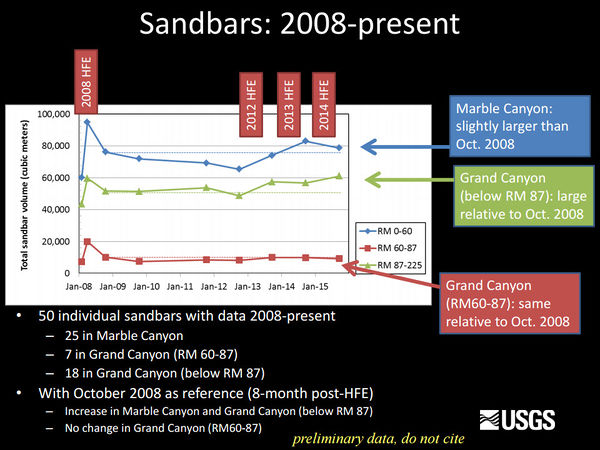Difference between revisions of "GCDAMP Sediment"
Cellsworth (Talk | contribs) |
Cellsworth (Talk | contribs) |
||
| Line 143: | Line 143: | ||
|- | |- | ||
|style="color:#000;"| | |style="color:#000;"| | ||
| + | |||
| + | ==Measuring turbidity== | ||
| + | [http://www.who.int/water_sanitation_health/hygiene/emergencies/fs2_33.pdf Turbidity is usually measured in nephelometric turbidity units (NTU) or Jackson turbidity units (JTU), depending on the method used for measurement. The two units are roughly equal.] | ||
*Eddies occur adjacent to rapids and the flow in the eddy is related to the flow characteristics in the rapid. Sand bars were typically larger before the dam.(Science Background for HFE Planning- Jack Schmidt, GCMRC_KA 2013) | *Eddies occur adjacent to rapids and the flow in the eddy is related to the flow characteristics in the rapid. Sand bars were typically larger before the dam.(Science Background for HFE Planning- Jack Schmidt, GCMRC_KA 2013) | ||
Revision as of 16:38, 21 September 2016
|
|
Sediment and GeomorphologyErosion of sandbars (beaches) along the Colorado River in Grand Canyon was first reported in the early 1970s, approximately 10 years after completion of Glen Canyon Dam. Since then, scientific studies have been conducted to monitor changes in sandbars and changes in the amount of sand stored on the bed of the river. One of the outcomes of these studies has been the implementation of flow experiments intended to rebuild eroded sandbars, especially by the release of controlled floods, also called “High Flow Experiments, or HFEs,” from Glen Canyon Dam. The sediment and geomorphology projects at Grand Canyon Monitoring and Research Center include the collection and processing of data to provide information needed to conduct controlled floods and to evaluate the outcome of each controlled flood and the long-term effects of controlled floods and normal dam operations on sediment-related resources.
Desired Future Condition for Sediment-Related ResourcesHigh elevation open riparian sediment deposits along the Colorado River in sufficient volume, area, and distribution so as to provide habitat to sustain native biota and desired ecosystem processes |
| --- |
--- |
--- |
|---|



